Category Archives: Skin Care
“To change the world, we need to combine ancient wisdom with new technologies.” — Paulo Coelho
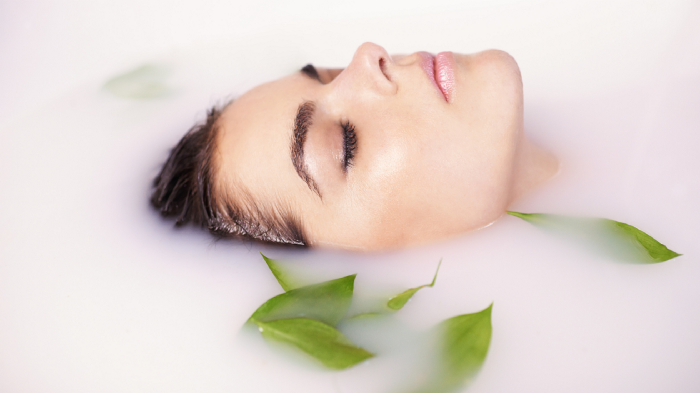
Milk, yogurt, oil, tea, honey, roses, saffron, salt, and pomegranates. No, not doing my shopping list but some of the most effective, tried-and-true ingredients that have endured centuries. It seems like our quest for beauty and the mythical “fountain of youth” have been around for thousands of years.
Of course, back then the ancient ladies could not just walk into a drugstore or cosmetic shop to get their stash of beauty products. So, they concocted their own creams with the use of natural and plant-based ingredients to have smooth and flawless skin. And, interestingly enough, in our modern world, we are making our way back to the roots of these ancient beauty traditions.
Let’s take a look at some of these beauty traditions that lives on to this day.
The practice of bathing in natural ingredients has been around for centuries, and various cultures have very specific bathing rituals. In Japan, different regions will infuse local ingredients into the bath water, such as green and black tea leaves, whose antioxidant properties soothe and detoxify the skin.
Cleopatra (the queen of beauty innovations) is known for using milk baths infused with all manner of fruits and flowers. Milk contains lactic acid, and we use a derivative of it today in the form of an AHA to exfoliate the skin, lighten dark spots, and improve the look of fine lines and wrinkles. There are a few other nourishing, plant-based options that you can use for your milk bath — coconut milk, oat milk, almond milk, goat milk, and buttermilk.
Similar to the effect of milk baths, yogurt was used by the ancient Greeks also as an AHA peel. They would mix yogurt with olive oil and apply it to the skin to treat sunburns and other skin conditions. The yogurt acts as a gentle exfoliant while the olive oil soothes and moisturizes.
The ancient Egyptians too were a big advocate for olive oil and used this along with many other ingredients to fight wrinkles and preserve their youth. Castor and sesame oils have also been used for centuries but one which has truly stood the test of time is moringa oil. Moringa seed comes from the moringa plant found in the Himalayan mountains. The seeds of the moringa tree contain high levels of oleic, palmitoleic and linoleic acids and contain vitamins A and Cand hydrates and nourishes the skin.
We all know how costly saffron is but Cleopatra is said to have added these bright orange stamens to her legendary milk baths. Studies found that saffron is a natural sunscreen and more recently scientists have discovered that saffron from Morocco’s High Atlas Mountains contains high levels of protective antioxidants and firming glycans, that protect, organize and stabilize the skin maintaining tissue structure, porosity and integrity.
And talking of mountains and high altitudes, Damask roses have historically been the preferred type of rose to treat the skin and body. Introduced by the ancient Persian empire, where the rose flourished, distilled rose water was then brought to Egypt and Rome through trade routes. It is often found in moisturizers and creams, but rose water is an effective toner on its own and is a great anti-inflammatory which can calm rosacea and eczema.
Salt scrubs have also been practiced across Europe and Asia since ancient times, incorporated into traditional bathing rituals. The coarse mineral acts as an effective physical exfoliator, sloughing away dead skin. Adding a few drops of essential oils to the salt makes the whole experience both functional and therapeutic. Lavender and eucalyptus work particularly well.
Pomegranate seeds can be arduous to extract from the fruit, but pomegranates are known to increase the potency of sunscreen, hydrate the skin, and fight free radicals with their high antioxidant content. They are now a popular ingredient in masks, moisturizers, and health elixirs.
A common ancient Greek remedy, honey, contains a plethora of antibacterial ingredients. Mixing it with olive oil creates a healing face mask that provides the skin with a boost of vitamins. Manuka honey, in particular, is now used in burn units and for ulcer treatment because of its exceptional healing ability.
And finally, another good skin care ingredient loved by the Ancients is turmeric. Its antibacterial and anti-inflammatory properties help to prevent skin problems like pimples and acne.
So, the next time you primp and pamper your skin, recognize and give thanks to the ancient founders who intuitively used nature’s gifts.
For more wellness tips, call us at Skinsense Wellness at (323) 653–4701, or check out our other blogs on Medium. And for skincare services, please visit us at 8448 W. Third Street, Los Angeles, CA 90048. We have re-opened our doors and are happy to welcome you all back.
“I remember smell better than my multiplication tables.”
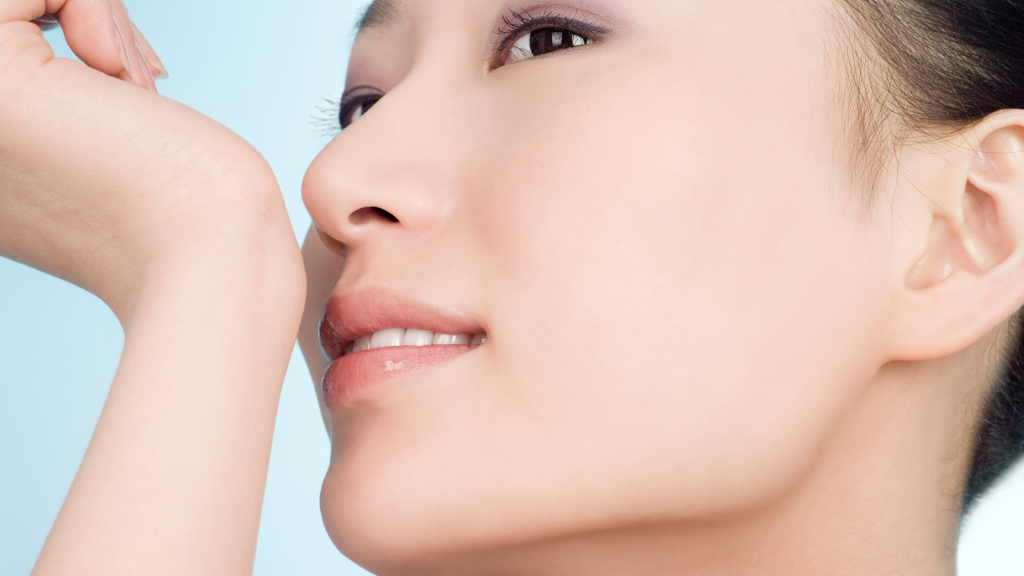
Last year when I was doing home service facials for my clients, one of the homes I went to had the smell of fresh oven-baked chocolate chip cookies as I walked in. As soon as the scent of chocolate combined with brown sugar and dough hit my nose, I was transported back to my childhood in my grandma’s house and can’t help but reminisce on those good old happy times. For some reason scents have a way of magically bringing back a memory.
Working with beautiful aromas and scents is one of the perks of being an aesthetician and salon owner that I enjoy so much — from the essential oils that freshen the space to the skincare products that I use for my facial treatments. All in all, it makes for a totally relaxing atmosphere. My clients love it and can’t help but comment on the pleasant smell as they enter the salon or as I slather their skin with the mildly scented skincare products. It certainly is a key element in the whole self-care experience.
However, fragrance has garnered a bad reputation recently. According to the American Academy of Dermatology, fragrances are considered one of the leading causes of allergic reactions on the skin. Let’s get to the heart of the matter.
What is fragrance in skin care products?
It’s any ingredient or combination of ingredients added to a product to make it smell a certain way. It could be to cover up an unpleasant or chemical-like smell, or it might simply be there to add a pleasant aroma to an odorless substance.
From moisturizers to serums to sun care, fragrance is added to all kinds of skin care products to make them more pleasurable to apply and bring an element of luxury to your skincare regimen.
Now to find out what’s best for our skin, let’s take a look at different types of formulations.
Natural — are usually created with a mixture of natural-origin ingredients and essential oils.
Synthetic- are made up of artificially derived chemicals and are of particular concern among those with sensitive skin because of their potential to cause irritation.
Fragrance-free — are products that do not have added chemicals that enhance aroma or mask an odor.
Unscented — are products that has no scent. Often so-called masking fragrances are used to cover up unwanted smells from other ingredients that may not have a pleasing odor.
Organic, natural, and green — are botanical extracts and essential oils that may be manufactured or naturally occurring.
Fragrances today aren’t generally harmful, but some people with sensitive skin might like to avoid them. No matter the source, some fragrances may contain allergens. So, both natural and synthetic fragrances may cause irritation to very sensitive skin types. If you have a skin condition, such as dermatitis or eczema, or very reactive and allergy-prone skin, it would be best to use fragrance-free products.
However, only one percent of the general population suffers from fragrance allergies. If you have a more resilient skin type, you may not experience any irritation at all and, in fact, may benefit from the therapeutic element that fragrance brings to a product — whether natural or synthetic. It is usually a safe addition to skin care products and may evoke positive emotions and happy memories as well as bring a more luxurious feel to your routine.
For more skincare tips, call us at Skinsense Wellness at (323) 653–4701, or check out our other blogs on Medium. And for skincare services, please visit us at 8448 W. Third Street, Los Angeles, CA 90048. We have re-opened our doors and are happy to welcome you all back.
“Chemistry… if you’re not part of the solution, you’re part of the precipitate.”
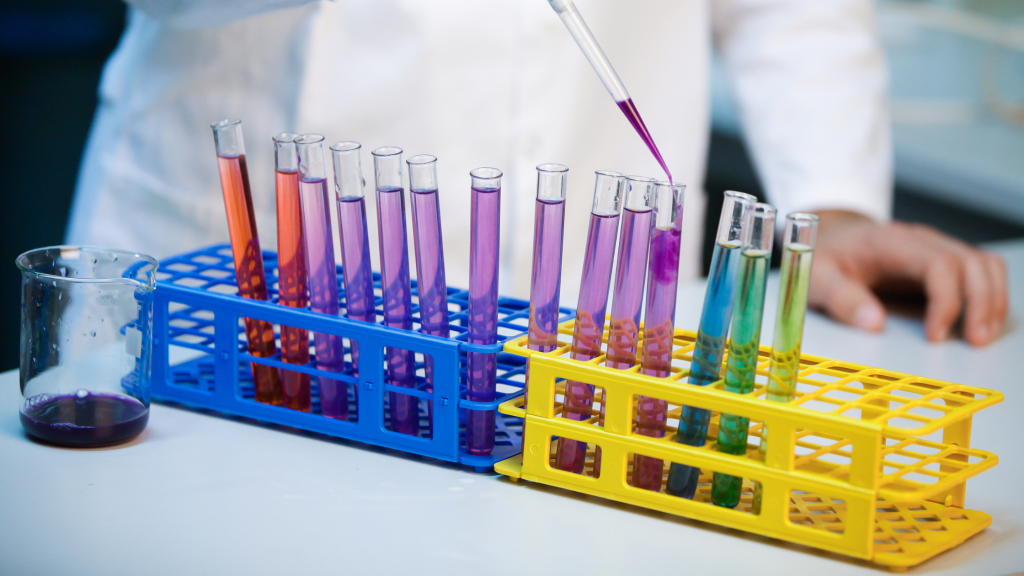
My 7th grade chemistry teacher was the first to introduce me to the pH scale by using litmus paper. We could establish the pH value of any liquid by dipping the paper into the liquids and then watching to see what color the paper turned. For example, it would show red for vinegar (acid) and blue for milk (alkaline.) Purple represented a neutral pH. It was fun!
So, what exactly is pH?
The term “pH” refers to “potential of hydrogen”. It concerns the activity of hydrogen ions (ions are molecules that carry a positive or negative charge) in a water-based solution. Hydrogen makes up two thirds of water, water being two hydrogen molecules plus an oxygen molecule, H²o.
The pH of a solution is indicated by a numeric scale that runs from 0–14. Anything below 7 (which is pH neutral) is considered acidic, while anything with a pH greater than 7 is considered alkaline, also referred to as basic.
How does pH relate to our bodies?
In our bodies, blood or cytoplasm are the “solutions” in which the required ions are floating. The normal pH of human blood is 7.35–7.45. Anything above or below that could have negative effects on our health.
With the growing interest in the microbiome in recent years and the ecosystem of our body, the principle of pH balancing is again brought to the forefront. This holistic approach believes that the foundation of healthy digestion is built on a simple eating system that maintains an ideal acid/alkaline (pH) balance in the body. Seventy per cent of the immune system is based in the abdomen and 90% of the tryptophan needed to make serotonin for the brain — essential to ensure we feel good — is made here.
As far as food intake goes, the suggested pH ratio would be a diet of two-thirds alkaline and one-third acid-forming foods. So, to take a step in the right direction, let’s outline a few alkaline foods that we can incorporate in greater quantities and some acidic foods we can eliminate.
Raw, green leafy vegetables like chard, kale and spinach are all excellent alkaline-rich foods. So are avocados, celery, cucumbers, tomatoes, peppers, broccoli, coconut, cherries, grapefruit, lemons and watermelon. A healthy way to start and end each day with an alkaline system for example, would be with a cup of warm water flavored with half a lemon.
Things to avoid would be white flour, coffee, red meat, too much alcohol, simple carbohydrates and artificial sugar.
How does pH affect our skin?
Our skin’s surface and uppermost layers are naturally acidic, making it compatible with acidic skin care products. The skin’s average pH is 4.7 and although the pH of our skin increases with age, it remains acidic.
Our skin has a protective film on its surface that’s known as the acid mantle. It plays a vital role by working with skin-natural ingredients like ceramides, cholesterol, enzymes, sweat, and even our skin’s own oil to protect skin’s surface and lower layers from external threats.
The skin’s acidic pH also plays a role in keeping its delicate microbiome balanced. An acidic microbiome makes it more difficult for harmful pathogens to multiply but lets the good stuff flourish. Frequently disturbing skin’s pH to a strong degree can lead to or worsen many problems, including common skin disorders (eczema, acne, rosacea, and wrinkles) and that dry, tight feeling from washing with bar or liquid soaps (most soaps are alkaline). Using highly acidic (pH 2.5 or lower) or alkaline (pH 8 or greater) products causes a significant disruption in skin’s pH too.
To avoid problems, look for pH-balanced skin care products (between pH 4 and pH 7). How do we do that when skincare products in the US don’t show the product’s pH? An easy solution would be to get a pH test kit available online for home use.
So, getting healthy glowing skin is really easy. All it takes is a few simple and inexpensive tweaks to your beauty routine and your diet.
For more skincare tips, call us at Skinsense Wellness at (323) 653–4701, or check out our other blogs on Medium. And for skincare services, please visit us at 8448 W. Third Street, Los Angeles, CA 90048. We have re-opened our doors and are happy to welcome you all back.
“Summer is over. Time to officially remember what day of the week it is.”

I remember my first day of college (although it was ages ago). I was excited and nervous at the same time. I was looking forward to a new chapter in my life but also a bit scared whether the students and teachers would be friendly, if I would find my classrooms without getting lost, and if I could catch up with all the lessons. Needless to say, it was stressful. To make matters worse, my skin started breaking out from the stress. Ugh!
It’s back to school time once again, and this year back to school for most students would be in-person after a long period of exclusively online classes. For students who are back on campus in their dorms, there are safety restrictions (of course) and six feet of social distancing. Other students are doing a hybrid model, where they are doing both virtual and in-person coursework. And others are completely remote.
Whatever the format, here is a list of essential products for students to use back in school to make sure their skin makes the grade.
1. First and foremost, have plenty of masks available — both washable and disposable, and lots of hand sanitizer and gloves. Washing with soap and water works really well and is an important part of staying safe and protected but you need some back up when a sink, hot water and soap aren’t around the corner.
Tip: Spray the inside of clean masks with a 2% salicylic acid or a tea tree hydrosol to help control breakouts. And emphasize the importance of using a clean mask every day.
2. Next, select an easy to apply wash-off cleanser that can be used morning and night. This will help to keep the skin clean in spite of late-night studying and constant mask wearing.
3. Bring a few spare pillowcases. These should be changed twice a week to prevent acne breakouts and for good hygiene.
4. Pack a lightweight daily moisturizer that is formulated for your skin type and can be used twice a day. Chances are you’re going to need extra moisture while away, living through winter weather and colder temperatures. Think of one with hyaluronic acid or ceramides for an extra boost.
5. A sunscreen with an SPF 30 should be worn daily. UV rays can still penetrate clouds and cooler weather.
Tip: some sunscreens are also moisturizing and can eliminate the need for regular moisturizers in the morning as long as your skin is not too dry.
6. College dorms are known for their cavalcade of aromas, many of them pungent and unpleasant! Use essential oils to improve the atmosphere, sleep, concentration, reduce stress and increase well-being. Electric plug-ins are safe and easy to use and available on Amazon.
Tip: orange, grapefruit and lemon are great mood elevators. Peppermint and eucalyptus help with concentration. Lavender is calming and can be mixed with any other oil. And of course, all the essential oils improve air quality and smell great!!
7. Hand cream — hands can get very chapped from all the handwashing, especially in cold weather. Keep several tubes in your backpacks and dorm room.
8. Spot treatment — even with daily routines, acne and breakouts happen. That can certainly put a damper on being social even though it is somewhat restricted at the moment. Spot treatments can discourage picking and improve confidence.
Tip: Salicylic acid, tea tree oil and Neosporin crème are all available over the counter and suit most breakout situations.
Being prepped for safety and well-being will allow you to concentrate on your studies and stay focused while still enjoying your college experience.
“In school, you’re taught a lesson and given a test. In life, you’re given a test that teaches you a lesson.” — Tom Bodett
For more skincare tips, call us at Skinsense Wellness at (323) 653–4701, or check out our other blogs on Medium. And for skincare services, please visit us at 8448 W. Third Street, Los Angeles, CA 90048. We have re-opened our doors and are happy to welcome you all back.
“I found a really effective sunblock, It’s called my house.”
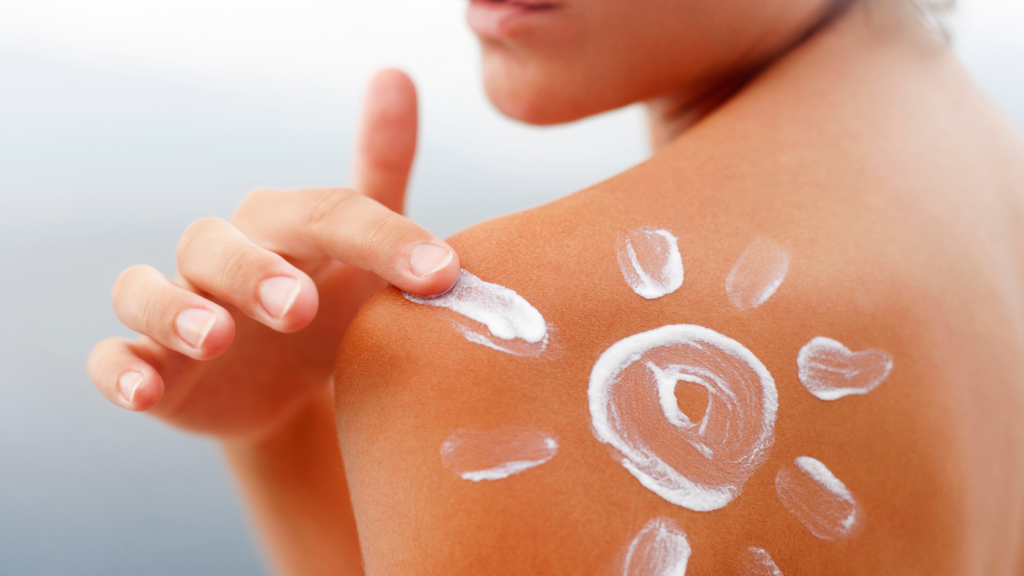
Perhaps you can call me a sunscreen bully because I constantly tell my clients to wear it daily before going out, even on a cloudy day. I slather a generous amount on my face and body every morning. It’s always best to protect ourselves from the dangerous UV rays of the sun and from the risk of skin cancer. Now I hear from the news that sunscreen actually causes cancer. What’s going on! And should I freak out already?
Benzene, a colorless liquid that is known to be carcinogenic has been found in some sunscreens and after-sun products by Valisure, an online pharmacy and lab, most of them spray-ons. It’s important to note that benzene is not an ingredient in sunscreen, and Valisure’s petition for a recall of these products suggests that the findings are a result of contamination somewhere in the manufacturing process.
Here’s what changes you can make to stay safe.
With summer in full swing, sunscreen is a necessity for everyone. Beachgoers often reach for aerosols because they are easier and less messy to apply than creams so when their favorite brands are suddenly unavailable there can be a confusing scramble to find a replacement.
Furthermore, the discussion about whether anything is really safe reoccurs, and this leaves people open and vulnerable to sun damage and potential skin cancers. Being in the skincare industry as a fulltime aesthetician, I definitely think it’s not an option to skip on sun protection most especially in the summer.
- Pick a sunscreen that wasn’t contaminated. The majority of products tested — over 200 of them — had no detectable amounts of benzene, and uncontaminated sunscreen should continue to be used.
- Check and choose formulas for safety. As far as formulation goes, there are two kinds — mineral based with zinc and titanium, and chemical blends that contain actives like octinoxate and homosalate. Very often both formulas contain other anti-inflammatory and anti-oxidant ingredients like aloe, green tea, lindera root, arnica and pomegranate, a great source of vitamin C. If you have very sensitive skin or suffer from rosacea, use a mineral based formula. Avoid oxybenzone, an ingredient that may behave like estrogen. Oxybenzone penetrates the skin easily and can disrupt the hormonal system. Look for products that along with zinc oxide, contain 3 percent avobenzone or Mexoryl SX. They protect skin from harmful UVA radiation.
- Avoid sprays and aerosols. They cloud the air with tiny particles that may not be safe to breathe particularly when used on children. And remember, a few blistering sunburns in childhood can double a person’s lifetime chances of developing serious forms of skin cancer. Keep infants under 6 months out of direct sun and well covered and shaded at all times. Their skin is not yet protected by melanin. It is important to note that any SPF with a higher protection factor of 30 only provides 1–2% extra protection and a much higher possibility for irritation.
- Apply sunscreen liberally at least 30 minutes before leaving the house and layer twice waiting 15 minutes before second application if possible. This ensures a more thorough covering. (Consider any protection contained in make-up a bonus and not a main source of protection.)
- Get your skin checked annually by your dermatologist. Men ignore sun safety at their peril. In 2021, the American Cancer Society estimates about twice as many American men are expected to die from melanoma as women. Surveys show that 48 percent of men report routine sun avoidance, compared to 68 percent of women.
- Slop on sunscreen and reapply it often, especially if swimming and sweating a lot. If it doesn’t smell right or feel right find another by using these guidelines.
- Wear a hat and sun protective clothing. And if possible, seek shade between 10 a.m. to 4 p.m.
Sunscreen is still a very important, effective, and a safe, scientifically-based way to prevent the harmful effects of the sun. Well, I guess I will be a sunscreen bully for life.
For more skincare tips, call us at Skinsense Wellness at (323) 653–4701, or check out our other blogs on Medium. And for skincare services, please visit us at 8448 W. Third Street, Los Angeles, CA 90048. We have re-opened our doors and are happy to welcome you all back.
“The only ex I need in my life is my exfoliator.”
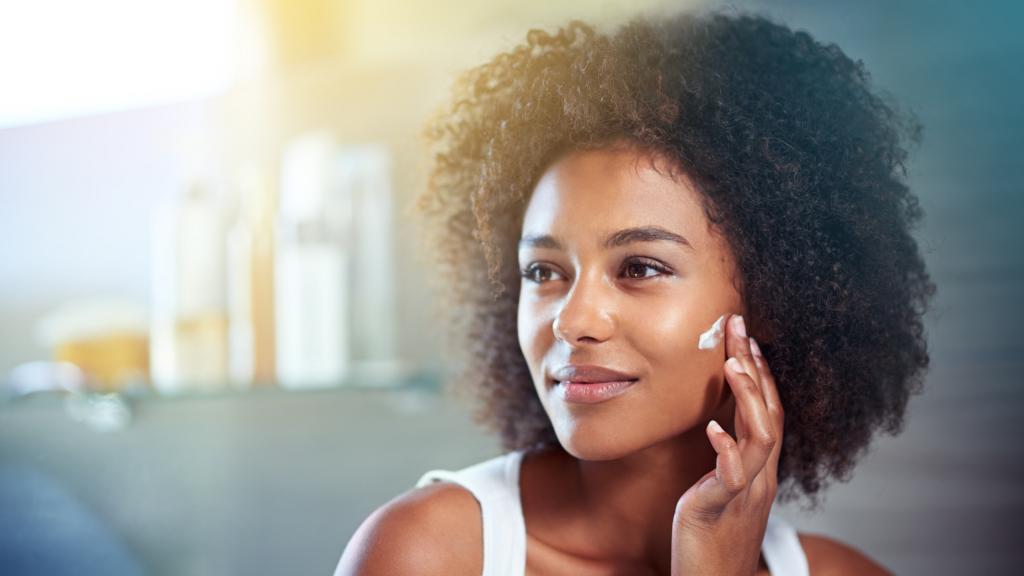
Did someone say New Kids on the Block? Yes, there’s a new kid on the block… the skincare block, that is. And while it’s not the popular boy band of the 90’s it has uh-oh-oh!!! the Right Stuff. They are Polyhydroxy acids (PHAs) and are considered “cousins” of alpha hydroxy acids (AHAs). They also happen to be one of the latest trendy beauty ingredients touted to banish fine lines.
What are they?
PHAs are chemical exfoliants, often used to remove the unwanted cells on the skin’s surface resulting in a more even skin tone and texture. The most common PHAs are galactose — a naturally occurring sugar that skin uses to synthesize collagen, lactobionic acid — derived from oxidized lactose (milk sugar), and gluconolactone — a powdery substance extracted from gluconic acid, found in animals and corn.
What do they do?
PHAs are a chemical exfoliant. And exfoliation helps to slough away dead, dull-looking skin resulting in reduced hyperpigmentation and improved skin texture. They are related to alpha and beta hydroxy acids but because they are formed from larger molecules, they penetrate the skin more slowly and without irritation.
PHAs hydrate skin. They support the skin’s barrier function, which locks in moisture and reduces the appearance of fine lines and wrinkles.
PHAs also help skin-care ingredients penetrate deeper into the layers of your skin, thus boosting their efficacy.
And, PHAs have antioxidant and humectant properties that help undo and prevent UV and pollution-induced free radical damage to collagen and skin resulting in an anti-aging effect. Over time this can soften fine lines and wrinkles.
Wow!!! Sounds like another great tool for the skincare toolbox.
Here’s a recap on their benefits:
- They’re Gentle Giants: They stay on the surface where they do a great job without traveling quite as deep as a straight-up AHA.
- Non-irritating: If you have sensitive skin, you’ll probably be able to apply a PHA with little-to-no stinging or irritation.
- Keep Skin Moist: PHAs are humectants (meaning they retain moisture reserves) and offer a great way to capture that healthy glow!
- They’re Anti-aging: These acids may be best known for their exfoliation properties, but their real claim to fame should be that they come armed with tons of anti-inflammatory and antioxidant properties.
How do you apply them?
PHAs are used in a wide selection of products, and in a few different ways. They are best applied to the skin at night to give them sufficient time to loosen the bonds between the outermost epidermis. They can be incorporated into any product type — liquid exfoliant, toner, mask, or moisturizer, which can be layered on top.
PHAs can also be combined with retinoids when treating acne or photoaging but be guided by your skincare professional when using PHAs this way to avoid any irritation.
A lot of AHA solutions will have PHAs in them in order to clean up the surface-level debris AHAs miss. PHAs are also added as an extra exfoliating factor to a non-exfoliating product like a cleanser so that dead skin cells are washed away when rinsed off. And PHAs are often the main ingredient and selling point.
If you’re looking for a natural, nontoxic compound that could positively influence cell turnover and keep your skin clear and healthy, PHAs might be the way to go!
For more skincare tips, call us at Skinsense Wellness at (323) 653–4701, or check out our other blogs on Medium. And for skincare services, please visit us at 8448 W. Third Street, Los Angeles, CA 90048. We have re-opened our doors and are ready to welcome you all back.
“All you need is love but a little chocolate now and then doesn’t hurt.”
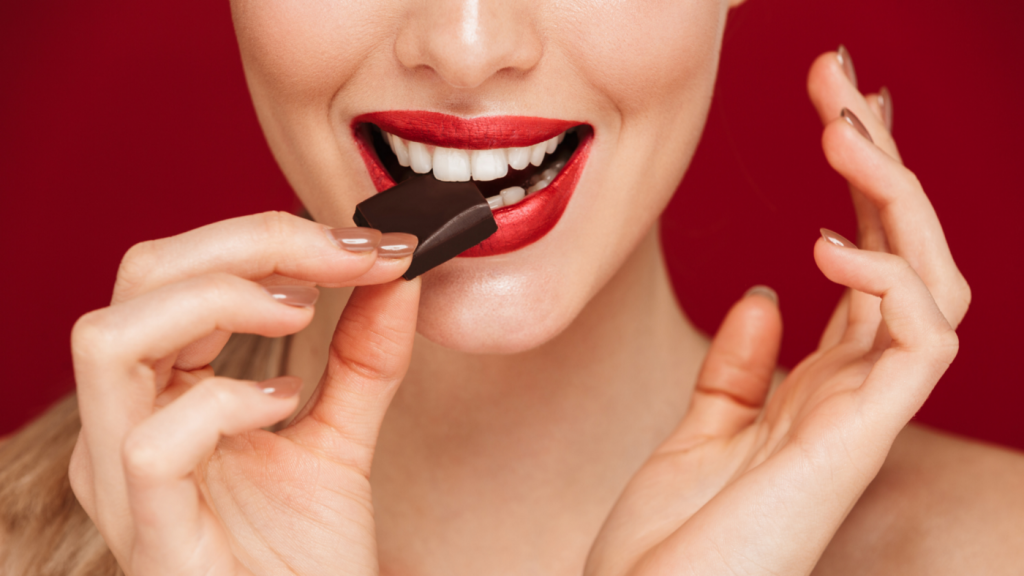
Hi, my name is Marion Simms… and I’m a chocoholic.
In America, we love any excuse to eat a lot of chocolates, Valentine’s Day being one of them. Who can refuse those sweet treats in heart-shaped boxes? If your chocolate consumption concerns you, then it’s worth examining what the impact of all that indulgence will have on your skin.
While it’s true some women may notice a breakout a few days after eating a chocolate bar, sugar is to blame in this case, not chocolate. A diet high in fat and refined sugars, like those found in candy and chocolate, can kick sebum production into high gear and trigger inflammatory responses in the body — both of which are known to increase the risk of breakouts.
To get some clarity let’s start with a couple of interesting facts. A lethal dosage of chocolate for a human being is about 22 lbs (or 40 bars of Dairy Milk). On the other hand, one Smartie or an M&M would be enough to kill a robin or a blackbird. And if you eat a chocolate bunny every day you obviously run the risk of becoming uhm… well rounded.
However, David Asprey in his Bulletproof blog, explains many benefits of chocolate. Here are a few of them…
- Chocolate can improve your mood, cognitive performance and give you an energy boost.
- It is good for your cardiovascular health because of the polyphenols in cacao which can increase HDL cholesterol (or good cholesterol).
- And chocolate can help you maintain glowing skin by modulating healthy blood flow.
In a study, two groups of women consumed either a high flavanol (dark chocolate) or low flavanol (milk chocolate) cocoa powder for a period of 12 weeks. While the low flavanol group showed no change in markers of skin health, subjects in the high flavanol group had on average 25% reduction in UV-induced erythema (sunburn) after exposure to a solar simulator. The high flavanol group also recorded increased skin density and thickness, as well as better hydration and less transepidermal water loss — the evaporation of water through the outer layer of the skin.
Milk chocolate is definitely high in sodium and cholesterol but contains more calcium. Dark chocolate has less calcium but also much less cholesterol and sodium.
One of my favorite facials is a chocolate enzyme treatment which includes a blast of oxygen as well as an application of pure cacao powder. With the combination of the antioxidants (when you indulge!) working from the inside and the brightening, tightening benefits happening on the outside, you are guaranteed a healthy, glowing complexion.
As my dear Granny used to say: “A little of what you fancy does you good”. I say enjoy a moderate indulgence of darker chocolate — anything above 65% cacao — and reap the benefits of this much-loved treat. When eaten in the right quantity it can actually be considered a health food.
“Chocolate comes from cocoa, which is a tree. That makes it a plant… so chocolate is a salad.”
For more skincare tips, check out my other blogs on Medium, call us at Skinsense Wellness at (323) 653–4701 or visit our website. We offer a virtual consultation, in-salon treatments, and home service facials to our valued clients.
“I guess chemistry is just another word for love.” — Scott Thompson

Do you remember in 7th grade science where we would test vinegar and milk with a litmus paper and the paper would turn light pink or purple? Depending on the color that the paper turned that was it’s pH value. That’s how we first learned about the pH scale — the acidity and alkalinity of substances. We learned too how all these different acids and alkalines work together in our environment as well as our bodies to keep things running smoothly. Well, it’s the same thing with skin. That’s why it is not unusual to talk about the pH level of a skincare product.
The letters pH stand for potential hydrogen, as hydrogen is the element that controls the levels of either alkalinity or acidity in a formulation. Acidic products range from 0–6.9 and are often used to exfoliate or peel the skin; alkaline products range from 7.1–14 and can be used in cleansers or to neutralize acidity. Very often moisturizers are formulated to be neutral (a pH of 7) to bring the skin back into balance. Too much acid or alkalinity is irritating for the skin, so the pH is always carefully calibrated.
The optimal pH value of skin on most of our face and body lies between 4.7 and 5.75. As mentioned above a pH of 7 (that of pure water) is considered neutral. Anything below that is acidic and above it alkaline, so skin’s natural pH is mildly acidic. Skin maintains its barrier best around 5.5 — slightly acidic. At the ideal pH (5.5), the skin is able to maintain a good barrier (the acid mantle) and, together with natural oils, moisturizers and bacteria, function as a true protective defense organ.
More recently, the principle of pH balancing has been applied to our general wellbeing. This holistic approach believes that the foundation of healthy digestion is built on a simple eating system that maintains an ideal acid/alkaline (pH) balance in the body. 70% of the immune system is based in the abdomen and 90% of the tryptophan needed to make serotonin for the brain — essential to ensure we feel good — is made here. So in order to live a long and happy life it obviously pays to keep our abdomens happy!
As we all know, in the case of romance it is often quoted “the way to a man’s heart is through his stomach.” But what we are talking about here may not involve the foods and habits we are recommending!
And how does all this reflect in the skin? Well, too much acidity triggers eczema, inflammation, acne, boils, rosacea and wrinkles. So all of these conditions could be greatly improved by maintaining a more alkaline system. Obviously, exercise and relaxation are essential as well as drinking the right amount of water. Men need more water than women on a daily basis. If you eat plenty of vegetables and two or three fresh fruits a day, you can fill half your required fluid quota easily.
How do we do that? The suggested pH ratio would be a diet of two-thirds alkaline and one-third acid-forming foods. This takes some adjustment. So, to take a step in the right direction, let’s outline a few alkaline foods that we can incorporate in greater quantities and some acidic foods we can eliminate.
Raw, green leafy vegetables like chard, kale and spinach are all excellent alkaline-rich foods. So are avocados, celery, cucumbers, tomatoes, peppers, broccoli, coconut, cherries, grapefruit, lemons and watermelon. A healthy way to start and end each day with an alkaline system, for example, would be with a cup of warm water flavored with half a lemon. Also adding turmeric, garlic, ginger and flax seeds to your diet along with a good probiotic will keep the gut healthy and the skin glowing.
Things to avoid would be white flour, coffee, red meat, too much alcohol and artificial sugar. Also minimize your intake of fermented foods — they are acidic in nature. Stick to moderate amounts of sauerkraut, kimchi and pickles. These will add vitamins to your diet and anti-inflammatory benefits too.
For more information on the science behind beautiful glowing skin, call us at Skinsense Wellness at (323) 653–4701 or visit our website. We offer a virtual consultation and home service facials to our valued clients. Let’s talk!
“If God wanted us to fly, he would have given us tickets.” — Mel Brooks

I love travel more than anything but flying… not so much. Flying is exhausting, it makes me feel icky, squished, and I get grumpy. To be honest, if only I could teleport, I would! No one loves long flights. And the things that flying does to my skin… it makes it very dry and dehydrated, prone to breakouts, and at times puffy.
Here’s how it actually sabotages our skin.
On the ground, depending on where you live and the time of year, humidity can range from 25% to almost 100%. The relative humidity in a plane is around 10%. When our environment — both inside and out — is low in humidity, the air, in turn, lacks moisture, which can cause dryness and discomfort. This dryness can occur anywhere affecting the face, lips and hands.
The low humidity in the cabin not only affects those with dry skin. In excessively dry situations, our oil glands can overcompensate, causing increased oil production. When this happens to an already oily complexion, the excess oil can combine and stick to any build-up of dead skin cells and other impurities lingering on the skin’s surface, which can then clog pores and lead to post-flight breakouts.
On the plane we are much closer to the sun and still very exposed to UV light particularly if we are seated by the window. Remember there is no cloud coverage at that altitude and no atmospheric protection.
Plus, dehydration paired with sitting in one position for a long time can cause fluid retention leading to puffy, swollen-looking skin, especially the feet.
With masks still a part of the travel protocol in the foreseeable future, even the most resilient skin can suffer.
So here are a few tips to help your skin survive flights.
- Get a really deep cleaning, hydrating facial 3–5 days before you leave. At our salon we offer the Hydradermie, a deeply penetrating galvanic treatment that does it all.
- The night before a flight, treat your skin to a hydrating mask. Slather on body lotion and condition your hair. Do the same thing the night of your arrival and if the skin has become cranky during the flight, apply a clay mask that has a more corrective, rebalancing formula.
- Before boarding, make sure your skin is super hydrated — eye crème, serum, moisturizer and sunscreen. And if you are comfortable doing this, lightly dust on a mineral powder for extra protection.
- If you have oily skin use a light serum after you have cleansed and toned, and any corrective topicals (for example, salicylic acid, topical antibiotic) before putting on your sunscreen and mineral powder.
- Use a calming mist with hydrating ingredients that can be spritzed liberally without the risk of drying. Do not use water to spray on the skin during the flight, it only dehydrates it.
- Don’t forget to drink copious amounts of water to hydrate from the inside out. Avoid alcohol, tea and coffee and order a light meal.
- We now know that airborne coronavirus particles do not stick to surfaces as we once thought. However, I would still recommend sanitizing your seating area when you get on the plane.
- During the flight sanitize your hands regularly and wash and use hand sanitizer every time you use the facilities. Keep your hands off your face as much as possible. And refrain from cleansing and re-applying during the flight except hand crème and lip balm. (Pack small containers so that security does not confiscate them).
- One final hurdle to clear is baggage claim. Use hand sanitizer after collecting your luggage. And once you have reached your destination, take a shower or bath to start your trip clean and refreshed.
Happy Travels and stay safe!
For more skincare tips, visit our website, call us at Skinsense Wellness at (323) 653–4701, or check out our other blogs on Medium. And for skincare services, please visit us at 8448 W. Third Street, Los Angeles, CA 90048. We have re-opened our doors and are ready to welcome you all back.
“Out of all my body parts, I feel like my eyes are in the best shape. I do at least a thousand eye rolls a day.”
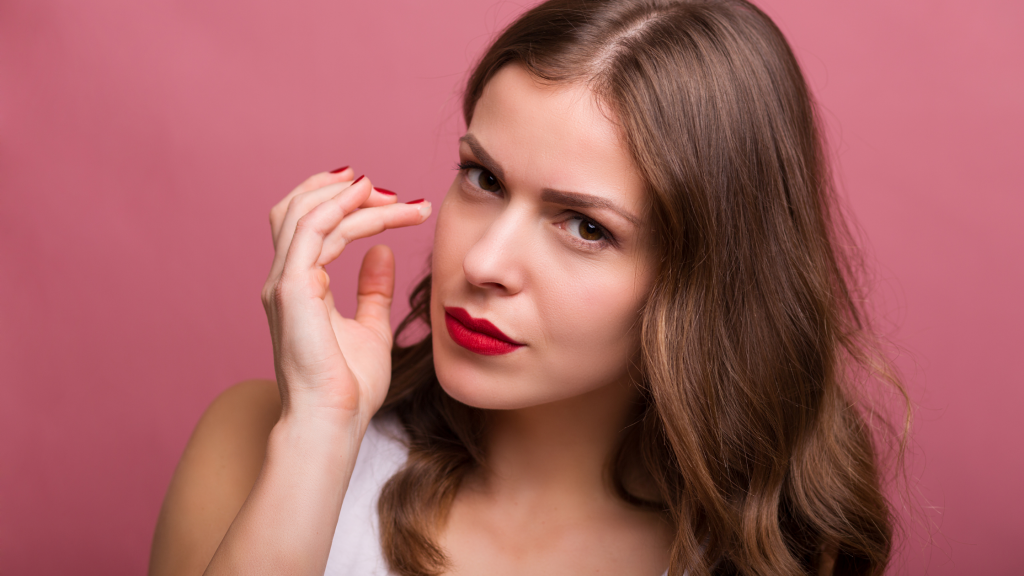
Making eye contact with everyone I meet tells me a lot about the person. I find it fascinating and I am certainly not alone in this. The results of a survey in the U.S., taken to find out what men and women notice first about the opposite sex, put eyes at the top of the list. This does not surprise me. And as an aesthetician, I can tell if the person cares enough to include the skin surrounding the eye area in their daily skincare routine.
This area is thinner, contains fewer oil glands and muscle tissue. It’s also delicate and often very sensitive to the environment and anything you put on it. Lack of sleep, exercise, and eye strain show up as dark circles, wrinkles and puffiness and eyes are the first area of the face to show tiredness. Layer seasonal allergies on top of all this and eye skincare can be a nightmare!!
Here are a few eye-skincare tips to keep them bright and young-looking.
1. Keep them moisturized. Cleansers and moisturizers for the face do not cut it. They are often too heavy and can cause those annoying little white bumps (called milia,) irritation and swelling. Eye creams, on the other hand, are often formulated with enough active ingredients that may help reduce wrinkles and fine lines without any irritation. Some ingredients to look for are:
a. Golden root, argania spinosa, Summer snowflake bulb, caffeine, hydroquinone, kojic acid, and vitamin C to reduce the appearance of dark circles.
b. Caffeine, green tea and coffee berry polyphenols, dipeptide-2 (Eyeliss), and willow herbs to help reduce puffiness.
c. Biopeptides to tighten.
d. Evening primrose and hyaluronic acid to hydrate.
e. Tuberose to revitalize tired eyes.
f. Argan oil, retinol, and peptides to stimulate collagen production resulting in plump and lift.
g. Antioxidants to help reduce free radicals triggered by UV rays, smoking, and pollution
2. Be gentle. When applying skincare products, start on the lids going from the inner to the outer area, circling under and into the side of the nose. Same with cleansers which are best used on a damp cotton pad. We know waterproof mascara can be challenging to remove but harsh makeup removers should be avoided.
3. Wear sunscreen. When applying sunscreen, don’t forget the upper eyelid. This is one of the most overlooked areas. Also consider investing in a pair of sunglasses that offers UV protection. This can help protect not only your eyes but also the skin around them from unwanted UVA and UVB rays.
4. Get a spa treatment. There are some great treatments that target the eye area using thermal therapy and microcurrent. These treatments use super light serums that penetrate with the help of the heat and electrotherapy. And when done consistently, can make the eye area look toned and firm.
5. Keep a healthy lifestyle — get enough sleep, eat healthy, and exercise. Try regular exercise that involves hanging upside down — yoga and downward dog for example. They can really make a difference because they defy gravity and reverse the blood flow.
6. Retire devices that emit blue light — computer, cellphones, televisions, one hour before bedtime. And consider using blue-light blocking glasses if your work demands hours of screen time. Blue light, known as high-energy-visible light (HEV), not only strains the eyes but can also accelerate the aging process and cause dryness.
Lastly, if topical treatments simply aren’t working, consider nonsurgical options like botox, fillers, and laser resurfacing.
For more skincare tips, call us at Skinsense Wellness at (323) 653–4701, or check out our other blogs on Medium. And for skincare services, please visit us at 8448 W. Third Street, Los Angeles, CA 90048. We have re-opened our doors and are ready to welcome you all back.



